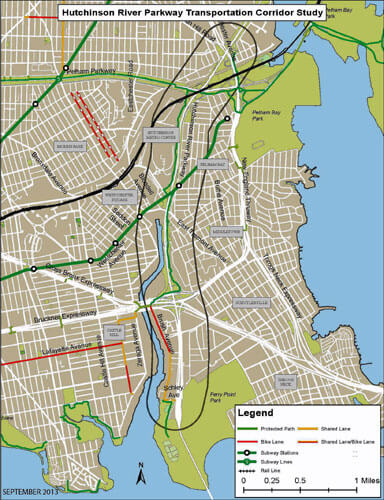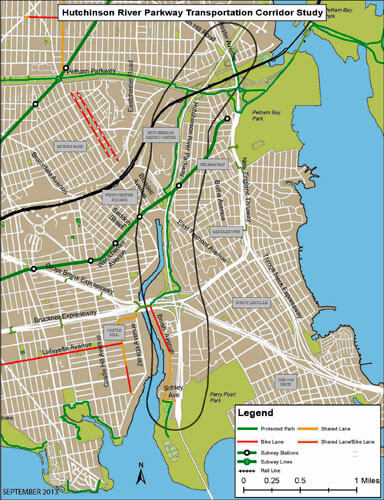A coalition of community organizations discussing ways to deal with increased traffic congestion may have made an impact on a major city study of the Hutchinson River Parkway.
An advocacy group calling themselves the Inter-Association Traffic Steering Committee, made up of local leaders and community associations, have been working independently along with Senator Jeff Klein’s office for several months to develop solutions to resolve an expected traffic nightmare once new construction of malls and other projects along the Hutch are completed.
The group’s recommendations, based on their experiences living and working in communities along the Hutch from Co-op City to Ferry Point, were made known to the Department of City Planning at a recent meeting of an advisory committee for the Hutchinson River Parkway Transportation Corridor Study.
Now it appears that DCP is listening, revising the release date for the final report from July to late summer or early fall so that they can consider additional stakeholder input.
“We have received substantial comments that we are working to address, some of which require coordination with other agencies,” said a DCP spokesperson. “We are hopeful that the report will be released in late summer/early fall.”
Development Galore
The Hutchinson River Parkway study is being done to come up ways to limit the effects of 10 planned and proposed developments, including three new malls and a hotel. Jeff Klein cheered DCP’s openness.
“With so much new development on the horizon, there is no doubt that serious consideration must be paid to traffic mitigation,” said Klein. “That’s why my office is committed to facilitating communication amongst the community and city and state agencies so that a nuanced, effective plan can be put into place ahead of time. DCP’s willingness to incorporate community concerns and suggestions is critical to developing a balanced traffic plan and I will do everything possible to further support this collaboration.”
Collaboration Ongoing
The situation is complicated because building the new infrastructure that the community wants would involve the federal, state, and local governments, as well as the acquisition of privately held land, said Arlene Grauer of the steering committee.
“It is really great that City Planning appears to have taken us seriously,” said Grauer, adding that the group is cautiously optimistic. “We are very happy that they have gone back to the drawing board.”
Frank Vernuccio, who represents the Throggs Neck Merchants Association on the committee, stated in an e-mail that he was encouraged that DCP was not going along with a July rollout of the plan.
“Their concepts were completely inadequate, and indeed counterproductive,” he stated. “A long range plan must include extensive work including new on/off ramps, increased lanes, etc. Immediate plans should include additional express bus service (especially to Manhattan’s west side) from the new malls, the East Tremont business district, and Co-op City, as well as better local bus service.”
According to members, other suggestions the committee made to DCP include improved access to the Hutchinson Metro Center, expanding Bassett Avenue to Pelham Parkway, redesigning the Pelham Parkway cloverleaf, better truck traffic enforcement, and changing access to the parkway’s service road in Ferry Point.






















